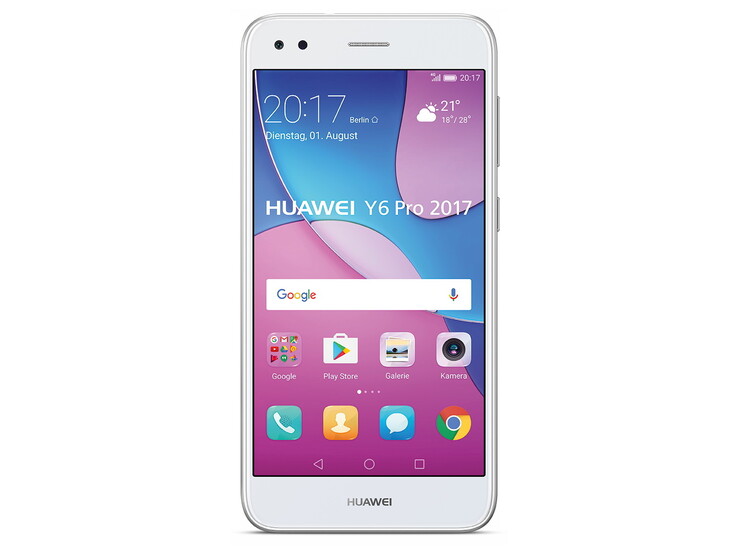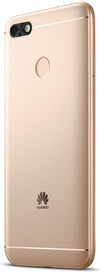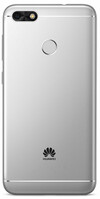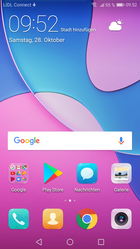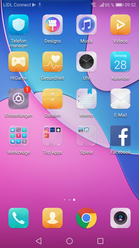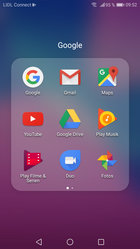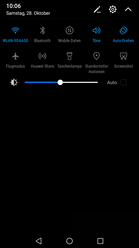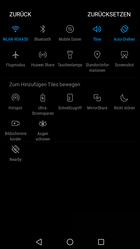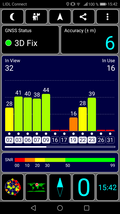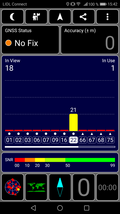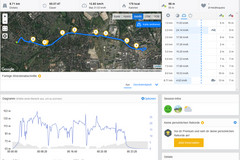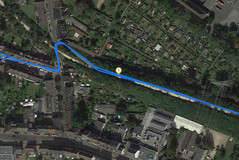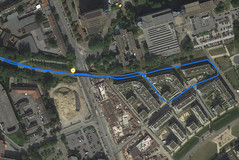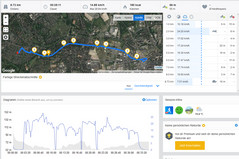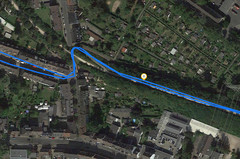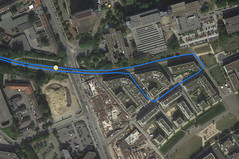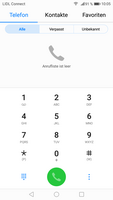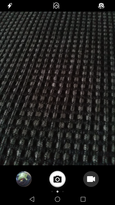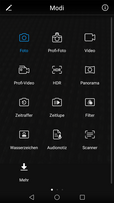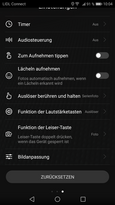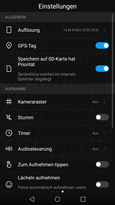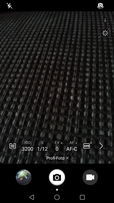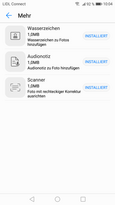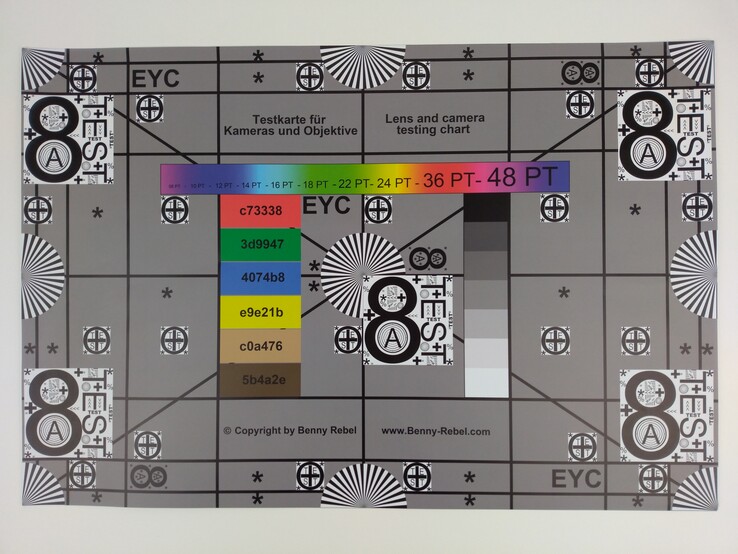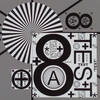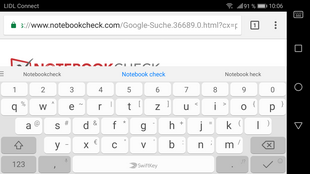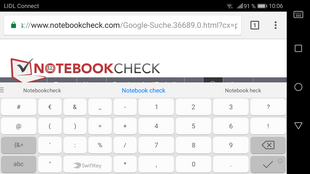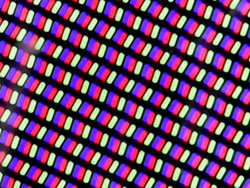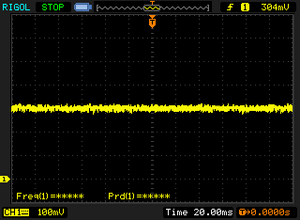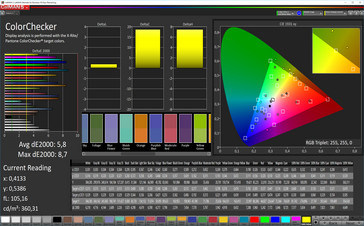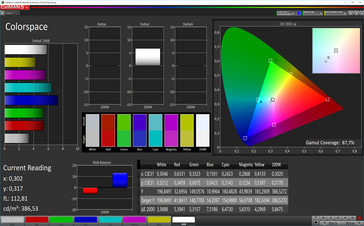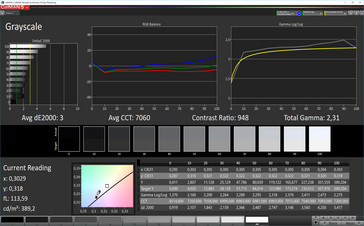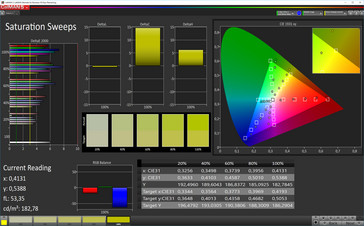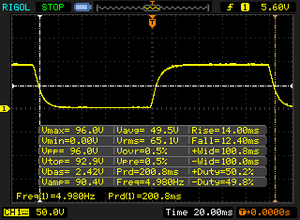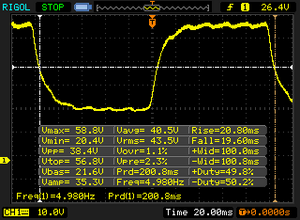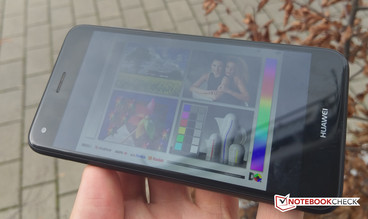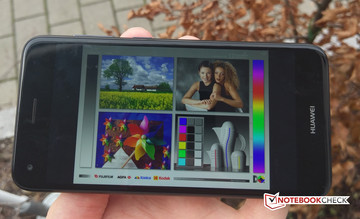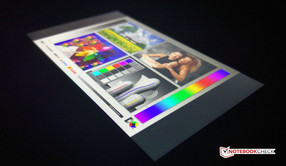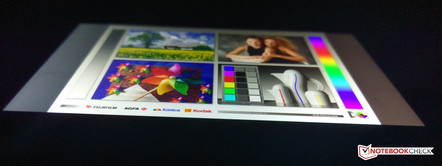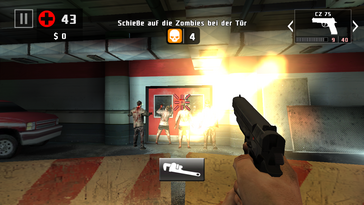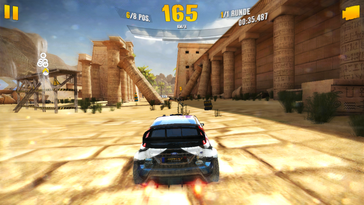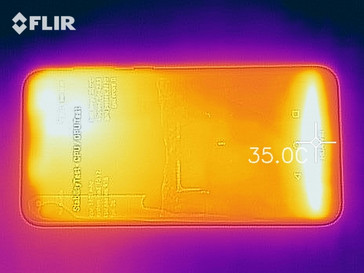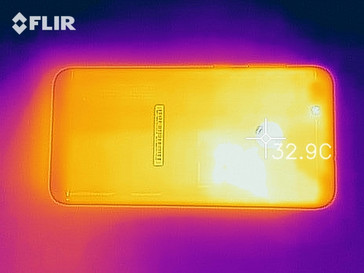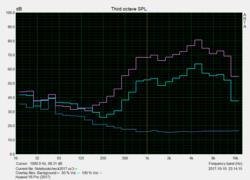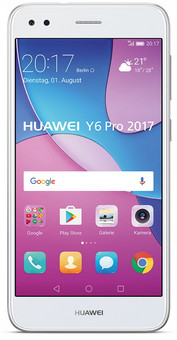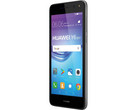Huawei Y6 Pro 2017 Smartphone Review
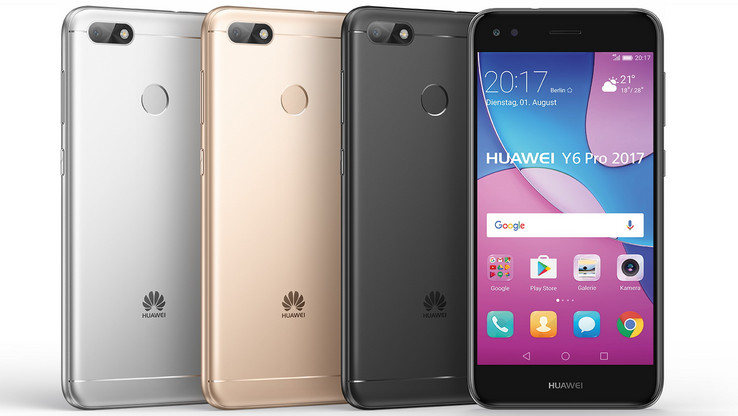
For the original German article, see here.
With the Y6 Pro, Chinese manufacturer Huawei is expanding its affordable Y-series. Unlike its non-Pro namesake, the Huawei Y6 Pro (2017) is powered by a Qualcomm Snapdragon 425 and an Adreno GPU. In addition, its case is made mostly of metal instead of plastic, and it includes a fingerprint-reader to boot. Similarities between the two phones include the 5-inch display and the remaining technical specifications.
Equipped with 2 GB of RAM and 16 GB of expandable storage (Micro SD cards up to 128 GB are supported), the Huawei Y6 Pro (2017) also includes a 13 MP main rear-facing camera with PDAF autofocus and a 5 MP selfie-camera at the front.
Selling for around $200, Huawei has positioned this entry-level device in a highly competitive market segment. Accordingly, plenty of competitors are up in arms to defend their turf, among others the Lenovo Moto E4 Plus, Nokia 3, Samsung Galaxy J3 2017, and in-house rivals Huawei Y7, Y6 2017, and Honor 6A.
Case
Made mostly of metal, the Huawei Y6 Pro’s case is available in black, silver, or gold, and at only 144 x 71 mm the phone is surprisingly compact. Nevertheless, the phone’s bezels seem comparatively large, and its display-to-body ratio is only 67.5%. At only 145 g it is very pleasant to hold in the hand.
For an entry-level device, build quality and choice of material were better than expected. The two buttons on the right-hand side of the device - the power button and volume rocker - are a tight fit and easy to reach, and they offer comfortably firm feedback and actuation.
Connectivity
For its price-point, 16 GB of eMMC storage is decently sized. Out of the box only 10.2 GB is available to the user, though. Storage can be expanded via Micro SD card (up to 128 GB); however, it cannot be formatted as internal storage.
The Huawei Y6 Pro (2017) is charged via the Micro USB 2.0 port at the bottom that does not support external peripherals such as keyboards or thumb drives via USB-OTG. Wireless display-streaming via Miracast worked flawlessly.
Software
The preloaded Android 7.0 operating system comes with Huawei’s in-house user interface EMUI 5.1 on top, and the device’s security patch level was up to date (September 2017). Whether or not Huawei is planning to update the phone to Android 8.0 Oreo has not yet been determined. Considering the smartphone’s price-point it is highly unlikely though.
Compared to stock Android, Huawei’s user interface has been heavily modified. In addition, several applications are preloaded on this device out of the box. Fortunately, they can be uninstalled.
Communication and GPS
With support for 802.11 b/g/n, the Huawei Y6 Pro’s Wi-Fi module only supports the highly congested 2.4 GHz frequency bands. Range and reception were decent, and when standing right next to the Wi-Fi router (Telekom Speedport W921V) power ratio was measured at around -41 dBm.
Overall Wi-Fi performance was at a level expected of a device at this price-point. Connected to our Linksys EA8500 reference router we were able to transfer a meager 52 Mbps (RX) and 47 Mbps (TX). Other devices in this price range offered comparable performance.
In addition to the aforementioned Wi-Fi standards, the device also supports Bluetooth 4.1 but lacks an NFC chip.
- The phone utilizes the most commonly used 2G, 3G, and 4G bands including LTE Cat. 4 with up to 150 Mbps (downstream). It also has dual SIM capabilities support for up to two Nano-SIM cards simultaneously. However, only the main SIM slot supports all frequencies and bands; the secondary slot is limited to 2G networks.
Positioning is performed via GPS, BeiDou, or GLONASS. Outdoors, position lock is obtained fairly quickly and accurately (6 m). However, we were unable to connect to any satellites indoors.
GPS accuracy is measured by taking the smartphone on an 8 km-long bike trip and comparing the results to a professional Garmin Edge 500 GPS. With only 20 m difference between the two (based mainly on alleged shortcuts) the entry-level device performed very well overall.
Telephony and Call Quality
Cameras
The rear camera’s 13 MP (4160x3120 pixels) CMOS sensor supported by a PDAF autofocus did its job very well, and the resulting photos were rich in detail. Dynamic range was somewhat limited though, and photos with a high dynamic range were often overexposed. While color accuracy was nowhere near the likes of Samsung's Galaxy Note 8, it was very decent considering the smartphone’s price. As is not uncommon for entry-level devices, photos taken in low-light situations were quite blurry with a significant amount of noise.
The front-facing 5 MP (2592x1944) camera is decent enough for occasional snapshots. Its photos are visibly worse than the rear camera’s and often both blurry and overexposed.
Both cameras are capable of recording FHD video at 30 FPS.
Accessories and Warranty
In addition to the smartphone itself, the box contains a modular 5 W charger, a USB cable, a quick-start guide, and a warranty booklet.
Devices sold in the US are limited to seller warranty. Please see our Guarantees, Return Policies & Warranties FAQ for country-specific information.
Input Devices and Handling
The controls are implemented via three capacitive on-screen buttons at the bottom of the screen. The 5-inch display reacted very accurately to touch input up to its very edges and corners. While input was accurate overall, it wasn’t particularly quick or reactive: occasionally, the reaction to touch input lagged behind significantly.
The integrated fingerprint-reader on the smartphone's rear side was fairly fast, however it was nowhere near the more expensive Huawei smartphones. In addition, it takes quite a while for the display to awaken from standby. Once unlocked, the sensor can be used for ending phone calls or taking photos and videos.
Display
The Y6 Pro’s IPS panel features a resolution of 1280x720. Given its 5-inch diagonal, the resulting pixel density is 294 ppi, and thus fairly average for its price-point. Subjectively, the panel was decently sharp and crisp.
According to our measurements with the X-Rite i1Pro2, the display’s maximum brightness was 407 nits and around 15 nits less with activated ambient light sensor. In the real-world APL50 test (Average Picture Level) the maximum brightness returned was 389 nits.
| |||||||||||||||||||||||||
Brightness Distribution: 90 %
Center on Battery: 393 cd/m²
Contrast: 936:1 (Black: 0.42 cd/m²)
ΔE ColorChecker Calman: 5.8 | ∀{0.5-29.43 Ø4.77}
ΔE Greyscale Calman: 3 | ∀{0.09-98 Ø5}
Gamma: 2.31
CCT: 7060 K
| Huawei Y6 Pro 2017 IPS, 1280x720, 5" | Huawei Y6 2017 IPS, 1280x720, 5" | Huawei Y7 IPS, 1280x720, 5.5" | Lenovo Moto E4 Plus IPS, 1280x720, 5.5" | Honor 6A IPS, 1280x720, 5" | Nokia 3 IPS, 1280x720, 5" | Samsung Galaxy J3 2017 PLS, 1280x720, 5" | Samsung Galaxy Note 8 Super AMOLED, 2960x1440, 6.3" | |
|---|---|---|---|---|---|---|---|---|
| Screen | 41% | 13% | 3% | 10% | -10% | 21% | 30% | |
| Brightness middle (cd/m²) | 393 | 438 11% | 467 19% | 425 8% | 480 22% | 481 22% | 502 28% | 530 35% |
| Brightness (cd/m²) | 388 | 432 11% | 456 18% | 425 10% | 462 19% | 469 21% | 494 27% | 536 38% |
| Brightness Distribution (%) | 90 | 90 0% | 92 2% | 93 3% | 94 4% | 84 -7% | 89 -1% | 93 3% |
| Black Level * (cd/m²) | 0.42 | 0.13 69% | 0.39 7% | 0.37 12% | 0.43 -2% | 0.22 48% | 0.35 17% | |
| Contrast (:1) | 936 | 3369 260% | 1197 28% | 1149 23% | 1116 19% | 2186 134% | 1434 53% | |
| Colorchecker dE 2000 * | 5.8 | 4.8 17% | 4.3 26% | 4.7 19% | 5.2 10% | 8.1 -40% | 4.6 21% | 2.6 55% |
| Colorchecker dE 2000 max. * | 8.7 | 11.4 -31% | 6.8 22% | 8.3 5% | 8 8% | 15.4 -77% | 8 8% | 5.1 41% |
| Greyscale dE 2000 * | 3 | 3.2 -7% | 3.5 -17% | 4.6 -53% | 3.1 -3% | 8.5 -183% | 2.5 17% | 2.7 10% |
| Gamma | 2.31 95% | 2.23 99% | 2.35 94% | 2.17 101% | 2.4 92% | 2.16 102% | 2.29 96% | 2.04 108% |
| CCT | 7060 92% | 7090 92% | 7273 89% | 7445 87% | 6688 97% | 9014 72% | 6351 102% | 6206 105% |
* ... smaller is better
Screen Flickering / PWM (Pulse-Width Modulation)
| Screen flickering / PWM not detected | |||
In comparison: 53 % of all tested devices do not use PWM to dim the display. If PWM was detected, an average of 8084 (minimum: 5 - maximum: 343500) Hz was measured. | |||
Contrast ratio (936:1) and black level (0.42 nits) are comparable to its competitors. That said, the Y6 Pro’s namesake without the “Pro” suffix scored much better. The real-world APL50 test yielded very similar results (0.42 nits, 926:1).
The panel’s DeltaE deviations of 5.8 (colors) and 3 (gray scale) were satisfactory overall and were comparatively low for an entry-level device. A blue filter can be enabled by selecting the eye comfort mode, and it should help to reduce eye strain.
Display Response Times
| ↔ Response Time Black to White | ||
|---|---|---|
| 26.4 ms ... rise ↗ and fall ↘ combined | ↗ 14 ms rise | |
| ↘ 12.4 ms fall | ||
| The screen shows relatively slow response rates in our tests and may be too slow for gamers. In comparison, all tested devices range from 0.1 (minimum) to 240 (maximum) ms. » 65 % of all devices are better. This means that the measured response time is worse than the average of all tested devices (20.2 ms). | ||
| ↔ Response Time 50% Grey to 80% Grey | ||
| 40.4 ms ... rise ↗ and fall ↘ combined | ↗ 20.8 ms rise | |
| ↘ 19.6 ms fall | ||
| The screen shows slow response rates in our tests and will be unsatisfactory for gamers. In comparison, all tested devices range from 0.165 (minimum) to 636 (maximum) ms. » 63 % of all devices are better. This means that the measured response time is worse than the average of all tested devices (31.6 ms). | ||
Brightness was high enough to overpower the sun even on sunny days. However, given its glossy and highly reflective nature, the display was completely unreadable when faced directly and had to be used at an angle. This worked perfectly fine thanks to its wide IPS viewing angles with only minor brightness decrease at extreme angles.
Performance
The Huawei Y6 (2017)’s Qualcomm Snapdragon 425 is an entry-level ARM SoC first introduced in 2016. Manufactured in a 28 nm process, the 64-bit SoC incorporates four Cortex A53 cores with clock rates up to 1.4 GHz and an Adreno 405 graphics chip.
In most benchmarks, the Y6 Pro performed fairly well and even better than its competitors. Our real-world experience differed immensely, though. In everyday use, the Snapdragon 425 combined with 2 GB of RAM stuttered and stalled quite frequently when multitasking. Thus, minor lags and longer loading times became an innate part of the Y6 Pro’s user experience.
| AnTuTu v6 - Total Score (sort by value) | |
| Huawei Y6 Pro 2017 | |
| Huawei Y6 2017 | |
| Huawei Y7 | |
| Lenovo Moto E4 Plus | |
| Honor 6A | |
| Nokia 3 | |
| Samsung Galaxy J3 2017 | |
| Samsung Galaxy Note 8 | |
| PCMark for Android | |
| Work performance score (sort by value) | |
| Huawei Y6 Pro 2017 | |
| Huawei Y6 2017 | |
| Huawei Y7 | |
| Lenovo Moto E4 Plus | |
| Honor 6A | |
| Nokia 3 | |
| Samsung Galaxy Note 8 | |
| Work 2.0 performance score (sort by value) | |
| Huawei Y6 Pro 2017 | |
| Huawei Y6 2017 | |
| Huawei Y7 | |
| Lenovo Moto E4 Plus | |
| Honor 6A | |
| Nokia 3 | |
| Samsung Galaxy J3 2017 | |
| Samsung Galaxy Note 8 | |
| GFXBench (DX / GLBenchmark) 2.7 | |
| T-Rex Onscreen (sort by value) | |
| Huawei Y6 Pro 2017 | |
| Huawei Y6 2017 | |
| Huawei Y7 | |
| Lenovo Moto E4 Plus | |
| Honor 6A | |
| Nokia 3 | |
| Samsung Galaxy J3 2017 | |
| Samsung Galaxy Note 8 | |
| 1920x1080 T-Rex Offscreen (sort by value) | |
| Huawei Y6 Pro 2017 | |
| Huawei Y6 2017 | |
| Huawei Y7 | |
| Lenovo Moto E4 Plus | |
| Honor 6A | |
| Nokia 3 | |
| Samsung Galaxy J3 2017 | |
| Samsung Galaxy Note 8 | |
| GFXBench 3.0 | |
| on screen Manhattan Onscreen OGL (sort by value) | |
| Huawei Y6 Pro 2017 | |
| Huawei Y6 2017 | |
| Huawei Y7 | |
| Lenovo Moto E4 Plus | |
| Honor 6A | |
| Nokia 3 | |
| Samsung Galaxy J3 2017 | |
| Samsung Galaxy Note 8 | |
| 1920x1080 1080p Manhattan Offscreen (sort by value) | |
| Huawei Y6 Pro 2017 | |
| Huawei Y6 2017 | |
| Huawei Y7 | |
| Lenovo Moto E4 Plus | |
| Honor 6A | |
| Nokia 3 | |
| Samsung Galaxy J3 2017 | |
| Samsung Galaxy Note 8 | |
Subjectively speaking, web-browsing performance was substandard even for an entry-level device. Page contents took quite some time to load and render, and scrolling was not always as smooth as we would have expected.
| JetStream 1.1 - Total Score | |
| Samsung Galaxy Note 8 (Samsung Browser 6.0) | |
| Honor 6A (Chrome 55.0.2883.91) | |
| Huawei Y7 (Chrome 60) | |
| Huawei Y6 Pro 2017 (Chrome Version 61) | |
| Huawei Y6 2017 (Chrome 60) | |
| Samsung Galaxy J3 2017 (Chrome 59) | |
| Lenovo Moto E4 Plus (Chrome 60) | |
| Nokia 3 (Chrome 59) | |
| Octane V2 - Total Score | |
| Samsung Galaxy Note 8 (Samsung Browser 6.0) | |
| Honor 6A (Chrome 55.0.2883.91) | |
| Huawei Y7 (Chrome 60) | |
| Huawei Y6 2017 (Chrome 60) | |
| Huawei Y6 Pro 2017 (Chrome Version 61) | |
| Samsung Galaxy J3 2017 (Chrome 59) | |
| Lenovo Moto E4 Plus (Chrome 60) | |
| Nokia 3 (Chrome 59) | |
| Mozilla Kraken 1.1 - Total | |
| Lenovo Moto E4 Plus (Chrome 60) | |
| Nokia 3 (Chrome 59) | |
| Samsung Galaxy J3 2017 (Chrome 59) | |
| Huawei Y6 2017 (Chrome 60) | |
| Huawei Y6 Pro 2017 (Chrome Version 61) | |
| Huawei Y7 (Chrome 60) | |
| Honor 6A (Chrome 55.0.2883.91) | |
| Samsung Galaxy Note 8 (Samsung Browser 6.0) | |
* ... smaller is better
At least storage performance was not half bad for its price-point. While it was unable to keep up with its non-Pro namesake in the AndroBench 5 test in regard to internal storage, the integrated Micro SD card-reader was reasonably fast. Benchmarked with our usual Toshiba Exceria Pro M501 reference card (maximum read: 270 MB/s; maximum write: 150 MB/s), it yielded a read and write performance of 84 and 64 MB/s, respectively.
| Huawei Y6 Pro 2017 | Huawei Y6 2017 | Huawei Y7 | Lenovo Moto E4 Plus | Honor 6A | Nokia 3 | Samsung Galaxy J3 2017 | Samsung Galaxy Note 8 | |
|---|---|---|---|---|---|---|---|---|
| AndroBench 3-5 | 22% | -6% | 41% | 4% | -19% | -1% | 170% | |
| Sequential Read 256KB (MB/s) | 143.4 | 202.6 41% | 119.4 -17% | 194.4 36% | 123.6 -14% | 181 26% | 177.7 24% | 797 456% |
| Sequential Write 256KB (MB/s) | 50.7 | 66.9 32% | 33.2 -35% | 42 -17% | 64.1 26% | 34 -33% | 51 1% | 205.9 306% |
| Random Read 4KB (MB/s) | 45.65 | 25.93 -43% | 53.2 17% | 19.15 -58% | 50.2 10% | 17.7 -61% | 24 -47% | 122.5 168% |
| Random Write 4KB (MB/s) | 6.78 | 20.54 203% | 6.9 2% | 29.4 334% | 6.94 2% | 5.5 -19% | 9.5 40% | 14.55 115% |
| Sequential Read 256KB SDCard (MB/s) | 83.4 ? | 48.4 -42% | 82.5 ? -1% | 66.3 -21% | 83.9 ? 1% | 64.3 -23% | 70.3 -16% | 67.9 ? -19% |
| Sequential Write 256KB SDCard (MB/s) | 64.1 ? | 26.4 -59% | 62.6 ? -2% | 46.6 -27% | 63.1 ? -2% | 62.9 -2% | 59.6 -7% | 59.3 ? -7% |
Gaming
The Adreno 405 GPU is based on a unified shader architecture (48 ALUs) and supports OpenGL ES 3.1 and DirectX 11.2. Current Play Store Android games, such as Asphalt Xtreme, were far from smooth.
In our benchmarks, the Y6 Pro’s GPU scored a decent average frame rate between 30 and 35 FPS in Dead Trigger 2; however, occasional hiccups and sudden drops were very noticeable.
The touchscreen and sensors worked flawlessly while gaming.
Emissions
Temperature
(+) The maximum temperature on the upper side is 36.7 °C / 98 F, compared to the average of 35.2 °C / 95 F, ranging from 21.9 to 247 °C for the class Smartphone.
(+) The bottom heats up to a maximum of 32 °C / 90 F, compared to the average of 34 °C / 93 F
(+) In idle usage, the average temperature for the upper side is 28 °C / 82 F, compared to the device average of 32.9 °C / 91 F.
Speakers
The device’s mono speaker is located behind the machined holes at the bottom of the device. Given its price-point, sound quality was adequate. As expected, mids and highs dominated the soundscape, and their characteristics were not particularly linear to boot. As can be seen on the pink noise diagram, lows (bass) were completely inaudible. At 85 dB(A), the speaker’s maximum volume was decent and sufficient.
The 3.5 mm headphone jack worked flawlessly and put out a very clear audio signal.
Huawei Y6 Pro 2017 audio analysis
(+) | speakers can play relatively loud (85.3 dB)
Bass 100 - 315 Hz
(-) | nearly no bass - on average 33.8% lower than median
(+) | bass is linear (4.9% delta to prev. frequency)
Mids 400 - 2000 Hz
(±) | reduced mids - on average 6% lower than median
(±) | linearity of mids is average (8.6% delta to prev. frequency)
Highs 2 - 16 kHz
(±) | higher highs - on average 5.8% higher than median
(+) | highs are linear (6.5% delta to prev. frequency)
Overall 100 - 16.000 Hz
(±) | linearity of overall sound is average (25.8% difference to median)
Compared to same class
» 64% of all tested devices in this class were better, 6% similar, 29% worse
» The best had a delta of 11%, average was 35%, worst was 134%
Compared to all devices tested
» 79% of all tested devices were better, 4% similar, 17% worse
» The best had a delta of 4%, average was 24%, worst was 134%
Huawei Y6 2017 audio analysis
(+) | speakers can play relatively loud (83.4 dB)
Bass 100 - 315 Hz
(-) | nearly no bass - on average 29.6% lower than median
(±) | linearity of bass is average (12.3% delta to prev. frequency)
Mids 400 - 2000 Hz
(±) | reduced mids - on average 5.8% lower than median
(+) | mids are linear (6.8% delta to prev. frequency)
Highs 2 - 16 kHz
(±) | higher highs - on average 7.2% higher than median
(+) | highs are linear (4.4% delta to prev. frequency)
Overall 100 - 16.000 Hz
(±) | linearity of overall sound is average (26.6% difference to median)
Compared to same class
» 68% of all tested devices in this class were better, 5% similar, 27% worse
» The best had a delta of 11%, average was 35%, worst was 134%
Compared to all devices tested
» 81% of all tested devices were better, 4% similar, 15% worse
» The best had a delta of 4%, average was 24%, worst was 134%
Honor 6A audio analysis
(+) | speakers can play relatively loud (83.8 dB)
Bass 100 - 315 Hz
(-) | nearly no bass - on average 35.3% lower than median
(±) | linearity of bass is average (7.4% delta to prev. frequency)
Mids 400 - 2000 Hz
(±) | reduced mids - on average 5.2% lower than median
(±) | linearity of mids is average (7.1% delta to prev. frequency)
Highs 2 - 16 kHz
(±) | higher highs - on average 5.2% higher than median
(+) | highs are linear (3.9% delta to prev. frequency)
Overall 100 - 16.000 Hz
(±) | linearity of overall sound is average (25.8% difference to median)
Compared to same class
» 64% of all tested devices in this class were better, 6% similar, 29% worse
» The best had a delta of 11%, average was 35%, worst was 134%
Compared to all devices tested
» 79% of all tested devices were better, 4% similar, 17% worse
» The best had a delta of 4%, average was 24%, worst was 134%
Frequency diagram (checkboxes selectable/deselectable!)
Battery Life
Power Consumption
Overall power consumption was okay. When idle, power consumption was comparable with the rest of the competition. Under load, the Huawei Y6 Pro’s average power draw of more than 5 W was comparatively high.
| Off / Standby | |
| Idle | |
| Load |
|
Key:
min: | |
| Huawei Y6 Pro 2017 3020 mAh | Huawei Y7 4000 mAh | Lenovo Moto E4 Plus 5000 mAh | Honor 6A 3020 mAh | Nokia 3 2630 mAh | Samsung Galaxy J3 2017 2400 mAh | |
|---|---|---|---|---|---|---|
| Power Consumption | 25% | 9% | -27% | 27% | 9% | |
| Idle Minimum * (Watt) | 0.6 | 0.57 5% | 0.89 -48% | 1.33 -122% | 0.67 -12% | 0.82 -37% |
| Idle Average * (Watt) | 2.02 | 1.61 20% | 1.87 7% | 2.53 -25% | 1.35 33% | 1.94 4% |
| Idle Maximum * (Watt) | 2.08 | 1.62 22% | 1.98 5% | 2.54 -22% | 1.39 33% | 2.06 1% |
| Load Average * (Watt) | 5.31 | 3.09 42% | 3.04 43% | 3.84 28% | 3.1 42% | 3.31 38% |
| Load Maximum * (Watt) | 6.41 | 4.26 34% | 4.01 37% | 6.12 5% | 4.02 37% | 3.89 39% |
* ... smaller is better
Battery Life
The 3,020 mAh lithium-polymer battery takes around 3.5 hours to charge from near empty to full.
Performed at a normalized display brightness of 150 nits, the Wi-Fi test yielded a good 11 hours of battery life. Nonetheless, most of its competitors managed to outlast the Huawei Y6 Pro (2017).
| Huawei Y6 Pro 2017 3020 mAh | Huawei Y6 2017 3000 mAh | Huawei Y7 4000 mAh | Lenovo Moto E4 Plus 5000 mAh | Honor 6A 3020 mAh | Nokia 3 2630 mAh | Samsung Galaxy J3 2017 2400 mAh | |
|---|---|---|---|---|---|---|---|
| Battery runtime | |||||||
| WiFi v1.3 (h) | 11.1 | 10.9 -2% | 11.9 7% | 13.1 18% | 13.2 19% | 9.2 -17% | 12 8% |
Pros
Cons
Verdict
The Huawei Y6 Pro (2017) is a compact and good-looking upper entry-level smartphone that won't cost you an arm and a leg. For around $200 you get a nicely equipped device with 16 GB of storage space, 2 GB of RAM, and a well-made metal case. In addition, battery life is decent thanks to its large 3,020 mAh battery.
Unfortunately, Huawei has failed to address some of its non-Pro namesake’s flaws and has carried them over to the Pro model as well. For example, Wi-Fi performance is still subpar and the selection of supported LTE bands is relatively low. The display is just as dark as it was, yet for some reason its contrast level and black point are even lower than on the Y6 (2017)! It’s a mystery to us what exactly qualified the new display to be used in a “Pro” device.
The biggest issue we have had was the device’s poor and erratic system performance. Huawei’s user interface EMUI 5.1 simply does not run smoothly on a Qualcomm Snapdragon 425, resulting in fairly regular stutter and lag.
Despite deficits regarding display and performance, the Huawei Y6 Pro (2017) is an overall decent package for around $200. Whether or not it is worth the price premium when compared to its non-Pro namesake is up to your individual liking.
Huawei Y6 Pro 2017
- 11/06/2017 v6 (old)
Marcus Herbrich




